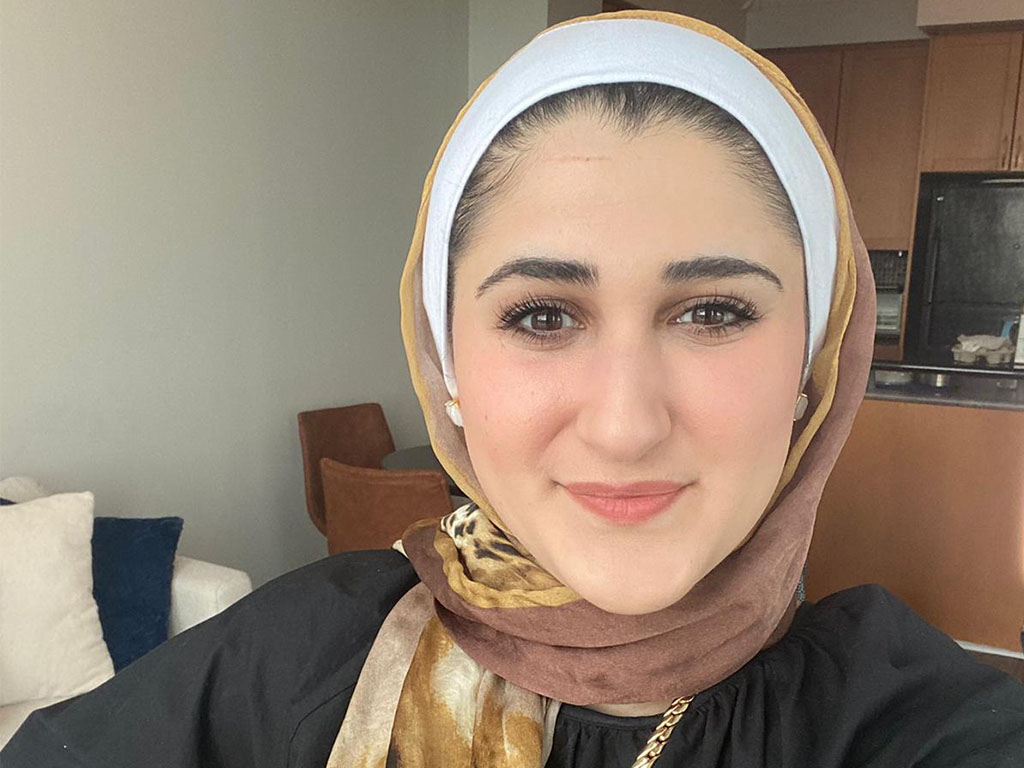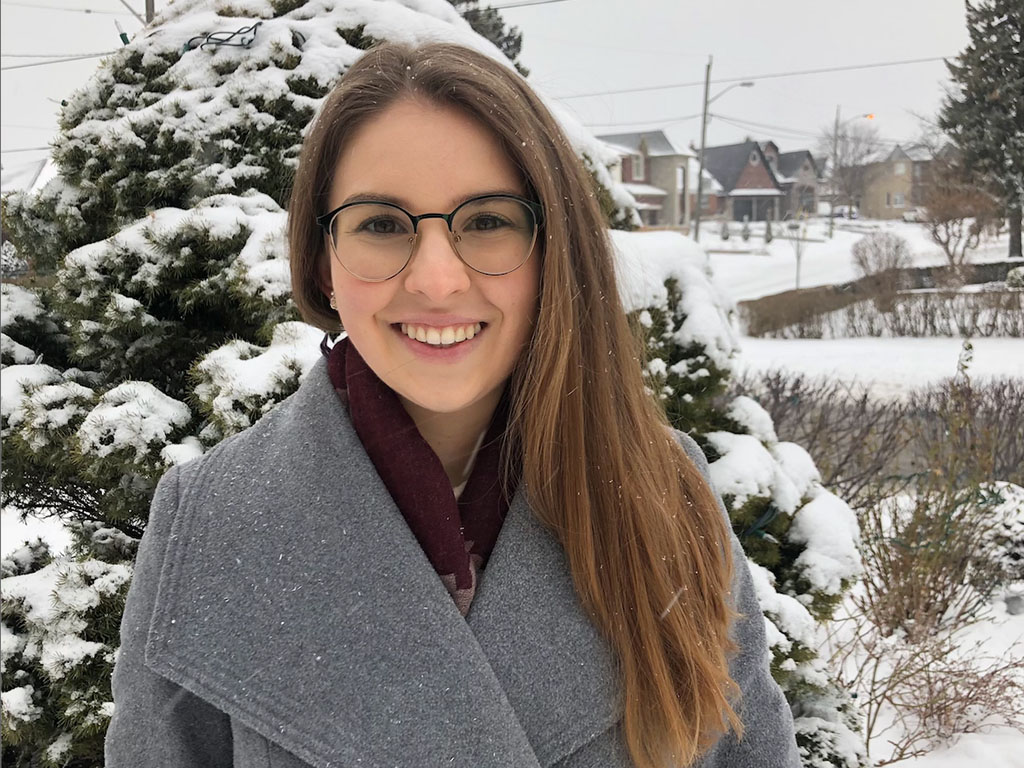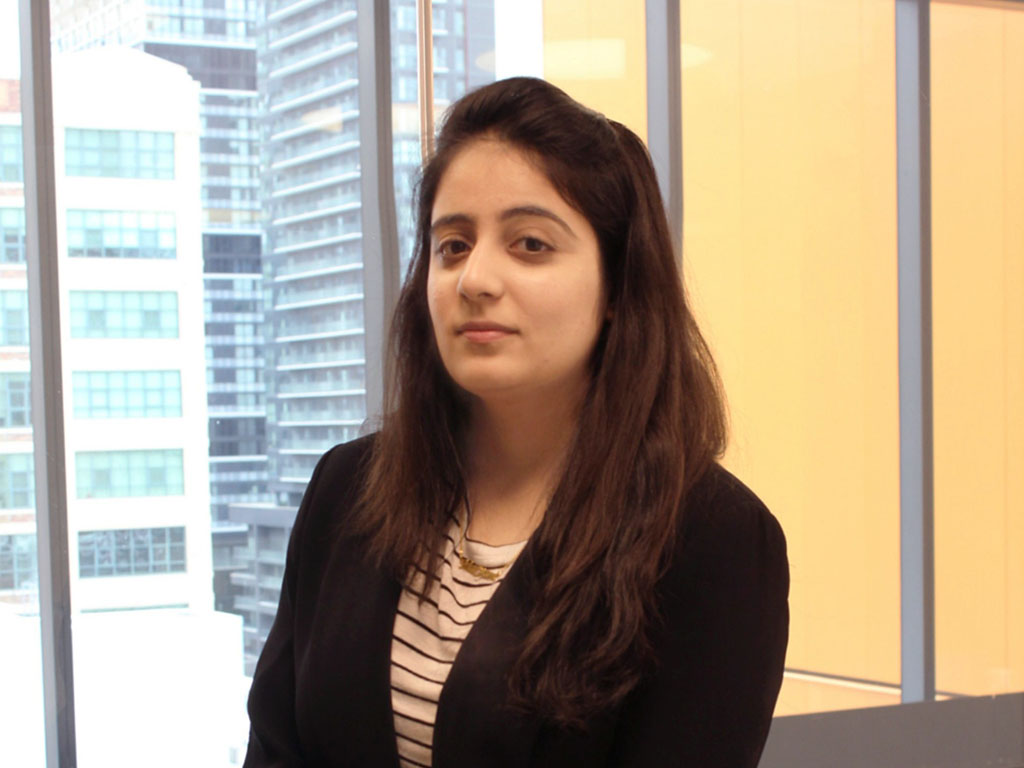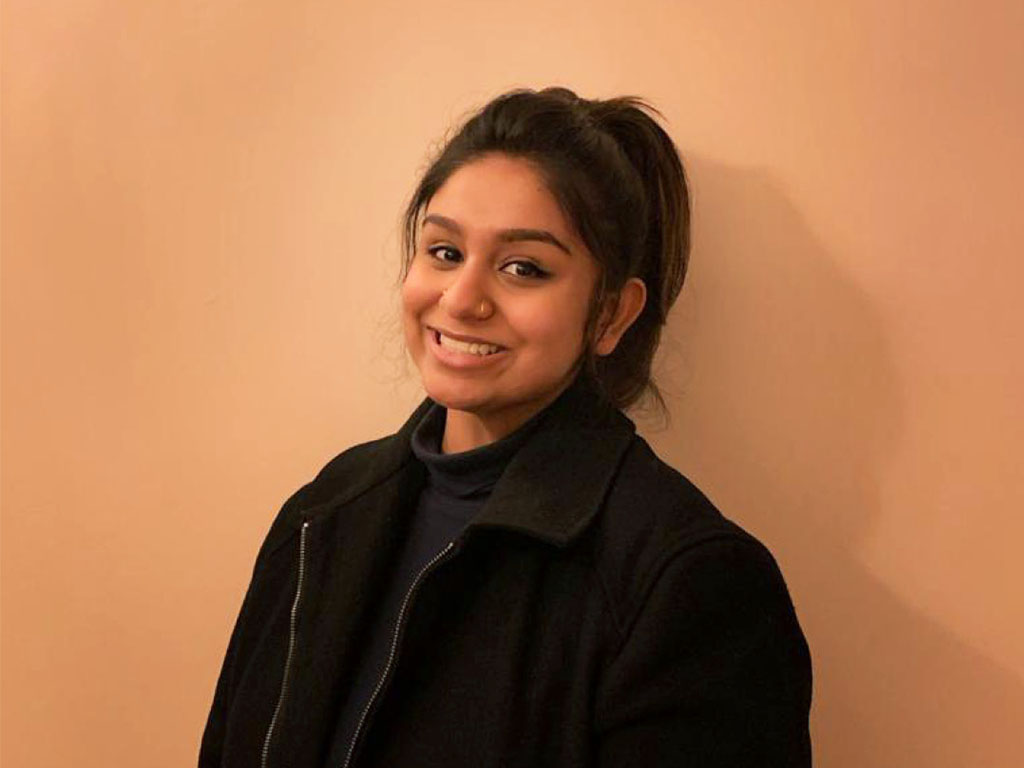Female students and alumna make their mark in STEM
According to UNESCO (external link) , only 30 percent of all female students globally choose STEM-related fields in higher education. Despite their lack of representation, women play critical roles in science, technology, engineering, and mathematics (STEM). By diversifying pools of researchers, women bring fresh perspectives and talent to these industries. We profiled students and an alumna from the Faculty of Engineering and Architectural Science (FEAS) to discuss their experience as women in STEM.

From the day that she decided to study civil engineering, Farah Samouh faced comments on how the field is for men. Today, as a traffic engineer, Samouh says that it is clear those assumptions are far from the truth. “Being a female in a male dominant space requires us to work harder to prove ourselves,” she said. However, “By working harder, you stand out for all the right reasons.”
As a woman in STEM, Samouh says that she was immersed in a supportive environment throughout her time at FEAS. She highlights the diverse research team in Bilal Farooq’s Laboratory of Innovation in Transportation (external link) (LiTrans) as an example, and where she had the opportunity to work alongside “some of the most brilliant female researchers,” such as Shadi Djavadian. Samouh says she was given an abundant amount of support to complete her masters thesis and that Djavadian “set a great example in the lab by having a powerful woman in a leading role who helped junior researchers achieve their goals while conducting her own research.” Samouh says that her studies gave her the necessary tools to stand out, allowing her to receive a full-time job offer after graduating.
For women and girls pursuing a career in STEM, Samouh says “no one owes you anything.” As harsh as this may sound, Samouh says this piece of advice changed her perspective. “You have to go out there and prove not just to others but to yourself that you are as great as you set yourself up to become. It won’t be easy at first, I assure you, I have failed more times than I can say I succeeded, but I learned from every mistake I made.”

Biomedical engineering masters student, Jennifer Kieda, says her first exposure to the realities of gender inequality in STEM was during a conversation with her doctor who said, "engineering? Isn't that for boys?" to which Kieda responded, "I guess we're going to have to change that." Despite the challenges women in STEM may face, Kieda says that these experiences shaped her into the woman and researcher she is today.
Kieda says she "applauds'' the work being done in the industry to promote a supportive and equal environment for women in STEM. She explains how groups such as Women in Engineering (WIE), hosted through the Equity and Community Inclusion (ECI) Office, offers a supportive environment for women to find female support across all disciplines. "Through their events, I encountered several upper-year females who provided fantastic advice for navigating challenges in engineering, and I am incredibly grateful," she says. During her third and fourth-year, Kieda was given the opportunity to work with Scott Tsai in the Laboratory of Fields, Flows and Interfaces (LoFFI) with the Institute for Biomedical Engineering, Science and Technology (iBEST) (external link) as a research assistant. Through this experiential opportunity, Kieda became interested in the biomedical engineering field, which led her to pursue research in her master's studies at FEAS. To advocate for women in STEM, Kieda became a teaching assistant, allowing her to provide female representation in her program.
To the women who have taken the leap to pursue a STEM major, Kieda says to be “proud of the adversity you faced and have overcome to be where you are right now,” and to “think about the power you hold to make a change towards creating gender equality in STEM.”

Third-year electrical engineering student, Mariam Mendha, was thrilled to learn that she was one of two Ryerson students who received the Hydro One Women in Engineering award. “The scholarship inspires me to work harder and to serve the community by encouraging younger girls to pursue careers in STEM.”.
Mendha says opportunities such as the Electrical Undergraduate Research Internship Program, which allows students to collaborate closely on a supervised research project with a faculty member, not only helped to improve her skills and grow her network, but also created a supportive environment for women like herself. Working as a research assistant under Bala Venkatesh, the program allowed her to improve her professional and analytical skills that Mendha says are essential for a “dynamic work environment and to be able to compete in a male-dominated industry.”
Mendha explains that she chose the engineering field because of the impact engineers have to address real-world challenges that concern people. Therefore, Mendha says that engineers always need to trust themselves and believe in their abilities. Although women have historically been underrepresented in the engineering space, her advice is to “speak up, prove yourself and never get discouraged looking at the distribution of women in the STEM field.”

Inspired by her civil engineering mother, third-year architectural science student, Treya Vyas, says that she always knew she wanted to pursue a career in STEM. As the principle of the Architecture Student Society (external link) and former vice president of communications of TimberFever (external link) , Vyas says she has been provided with an equal environment, lacking barriers, as a woman in STEM throughout her studies. “In architectural science, it doesn't matter if you're a girl or a boy. When you're presenting your project on the final day, you will get an honest critique.”
Vyas, a recipient of the Jason Fung Architect Diversity Award (external link) , says her professors have taught her valuable lessons that have allowed her to take on executive positions such as creative director for a Design Fabrication Zone start-up. For her final model presentation in her first-year, Vyas describes how her professor, Albert Smith, provided her with an honest critique that changed her perspective, using the feedback as a challenge to improve her work. “If my professors have a problem with my work, they'll tell me what’s wrong and I learn from that experience,” she says. “I’ve been able to join groups and take on leadership roles because I was taught that it’s not the end of the world if you’re not the best, but you still have to go in there and try.”